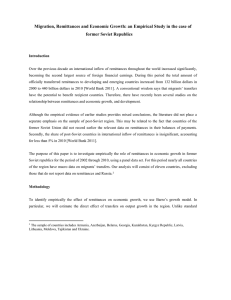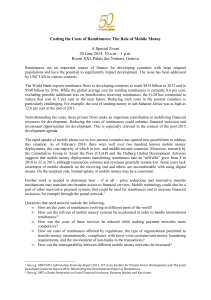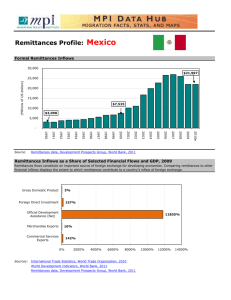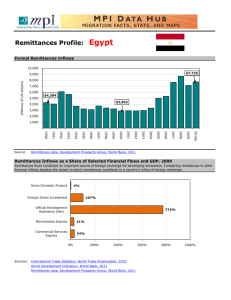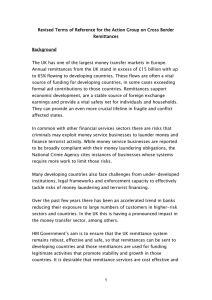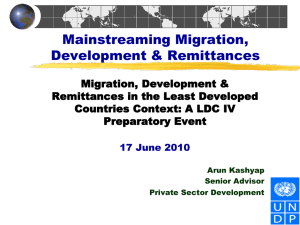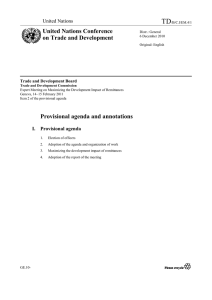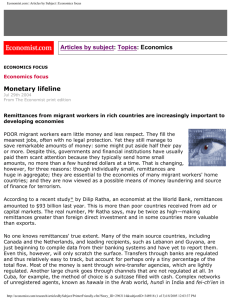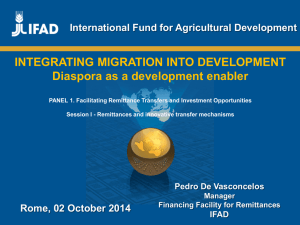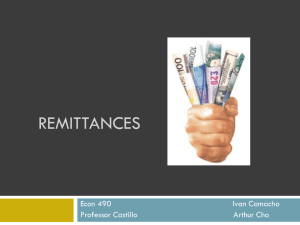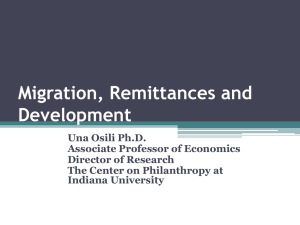Presentation
advertisement
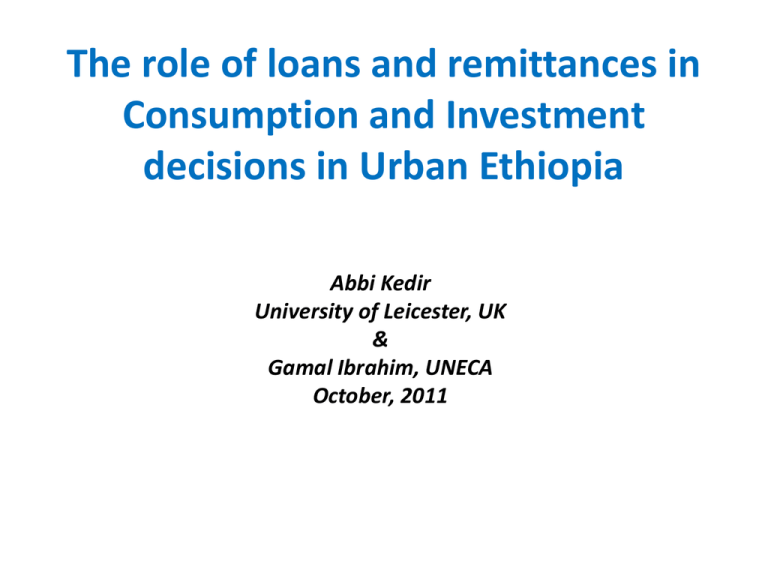
The role of loans and remittances in Consumption and Investment decisions in Urban Ethiopia Abbi Kedir University of Leicester, UK & Gamal Ibrahim, UNECA October, 2011 Outline of the talk • • • • • • • Purpose Motivation Related literature Theory Data Methodolgy Results and discussion Purpose • Do remittances and loans lead to higher/lower household asset accumulation, food and nonfood consumption? • Do remittances and loans increase the likelihood of self-employment or entrepreneurship? Motivation I • Finance and growth (macro level ‘link broken’) • Informal financial transfers are fundamental anchors of welfare and employment • Most micro level literature focuses on what determines access to credit and the motives for private transfers such remittances (Alvi and Dender, 2009). • Often credit and remittances are studied separately (Christensen and Pan, 2010). Motivation II • There is a dearth of evidence on how access to credit and remittances affect household investment and consumption decisions in SSA ( an attempt to trace the mechanism) • Labour market – one mechanism to link growth and poverty (Kedir et al 2011). • Provide relevant policy recommendations Literature(only micro) I • Alvi and Dender, 2009 : what factors significantly affect household loans and private transfers in Ethiopia. • Liverpool and Winter-Nelson (2010) no relationship b/n participation in microfinance programs and the use of technologies or consumption growth among the poorest households (Ethiopia). • For other households, microfinance has positive effects on both consumption and asset growth as well as on the use of improved technology. Literature II • Adams (1998)- effect of remittances on asset accumulation in Pakistan. Household are impatient (high discount rate) and do not sacrifice present consumption for the sake of asset accumulation. Theory I • Remittance flows over long distances (severe asymmetric information problem). • Credit need to be repaid and often provided by informal lenders (less serious asymmetric information problem) • Propensity to consume(invest) in the former (latter) is stronger than to invest(consume). Theory II • We test the following propositions: C / R 0; E / R 0; C / L or 0; & A / R 0 ; E / L 0 Data and Econometric framework • Panel data from urban Ethi0pia (1994,1995, 1997, 2000, 2004 on 1500 households) • Fixed effects of consumption and asset accumulation equations (Hausman test) • Random effect Probit of self-employment (stability of quadrature points) Key Results • Remittances are positively associated with food consumption, non-food consumption and asset (unproductive) accumulation. • Remittances are negatively associated with self-employment and entrepreneurship while the opposite is true for credit Policy I • The need for credit access to households to create employment is obvious. • Self-employment in the data is characterised by low-tech and low return small/micro firm activities. • Hence for meaningful development volume of capital provided must be much larger than what households can get via informal networks Policy II • Small/micro firms are unlikely to grow large. They simply provide subsistence for millions of unskilled workers. • About 800,000 urban informal sector firms (mfg, trade, services) with 1 million people employ.ed (Soderbom, 2010) Future work and econometric issues • Distinguish between domestic and external remittances • Remittances and labour supply to explore why remittances lead to lower self-employment. • Endogeneity (IV) and parameter heterogeniety (quantile regression).
